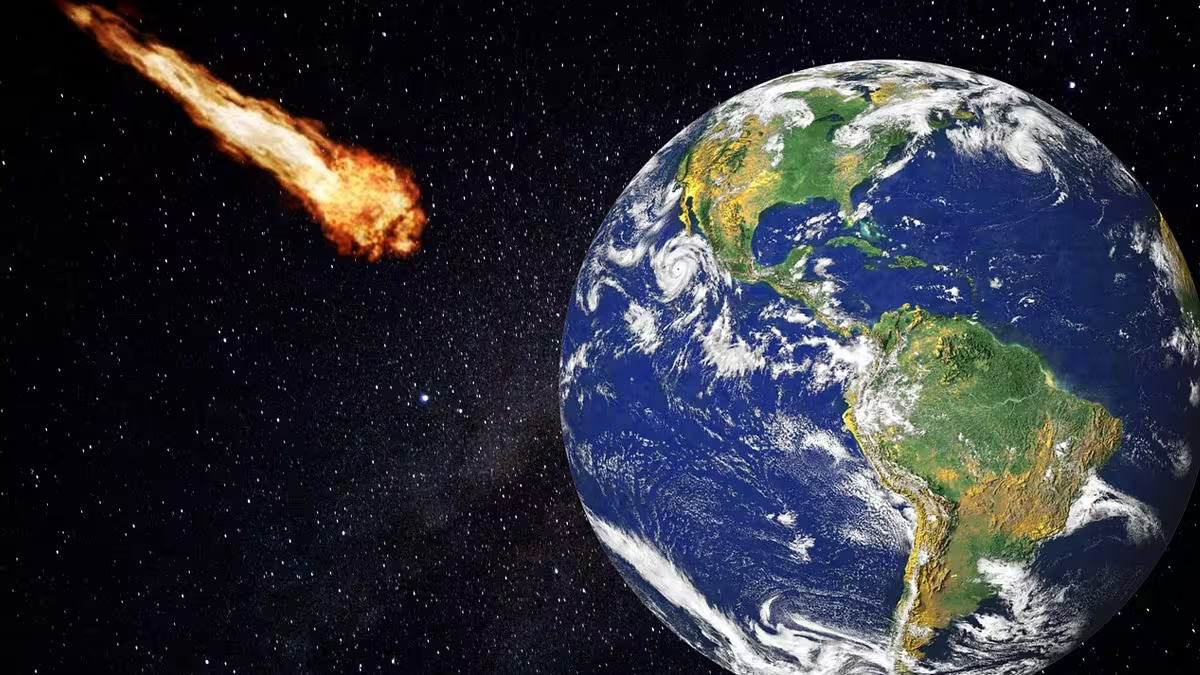NASA has identified an asteroid, 2024 YR4, that now carries a 3.1-percent chance of striking Earth on December 22, 2032—a probability that makes it the most significant near-Earth object ever recorded by modern forecasting.
Despite the increasing odds, experts are advising against panic. The global astronomical community is actively tracking the asteroid, with the James Webb Space Telescope set to observe the object next month for a more detailed analysis.
“I’m not panicking,” Bruce Betts, chief scientist for the nonprofit Planetary Society, told AFP.
“Naturally, when you see the percentages go up, it doesn’t make you feel warm and fuzzy and good,” he admitted, but reassured that further observations will likely refine the asteroid’s trajectory, reducing the probability to near zero.
Discovery and Characteristics of 2024 YR4
The asteroid was first detected on December 27, 2023, by the El Sauce Observatory in Chile. Based on its brightness, astronomers estimate its size between 130 and 300 feet (40–90 meters) wide. Analysis of its light signatures indicates a common asteroid composition, ruling out the possibility of it being a rare, metal-rich object.
On January 29, 2024, the International Asteroid Warning Network (IAWN) issued an alert after the impact probability exceeded 1 percent. Since then, the likelihood has continued to fluctuate but trend upward.
NASA’s current calculations place the probability of impact at 3.1 percent, which equates to a 1 in 32 chance—similar to correctly guessing five consecutive coin flips.
The last time an asteroid of this size posed a comparable threat was Apophis in 2004, which temporarily had a 2.7-percent chance of striking Earth in 2029—a risk that was later eliminated with more precise data.
Assessing the Threat Level
Surpassing Apophis’ initial risk assessment is “historic,” according to Richard Moissl, head of the European Space Agency’s (ESA) planetary defense office. However, ESA’s own estimates put the impact probability slightly lower at 2.8 percent.
“It’s a very, very rare event,” Moissl emphasized, while also clarifying, “This is not a crisis at this point in time. This is not the dinosaur killer. This is not the planet killer. This is at most dangerous for a city.”

The James Webb Space Telescope, the most powerful space observatory in operation, will play a crucial role in refining the asteroid’s trajectory.
“Webb is able to see things that are very, very dim,” said Betts, noting that 2024 YR4 is currently near Jupiter and will not make another close approach until 2028.
If future observations push the impact probability above 10 percent, IAWN would issue a formal global alert, urging United Nations members with territories in potential impact zones to begin preparedness measures.
Potential Impact and Consequences
Unlike the six-mile-wide (10-km-wide) asteroid that caused the Cretaceous-Paleogene extinction event 66 million years ago, 2024 YR4 is classified as a “city killer”—meaning it could devastate a localized area rather than cause a global catastrophe.
However, its destructive potential does not come solely from its size, but also from its tremendous velocity. If it impacts Earth, it could be traveling at nearly 40,000 miles per hour (64,000 km/h).
If 2024 YR4 enters Earth’s atmosphere, the most likely outcome is an airburst—an explosion midair similar to the Tunguska event of 1908, which flattened 800 square miles of forest in Siberia. Scientists estimate that the explosion could reach eight megatons of TNT—over 500 times the power of the Hiroshima bomb.
However, if 2024 YR4 is closer to the higher end of its estimated size, a direct impact could create a crater, leading to severe regional destruction.
The potential impact corridor currently includes the eastern Pacific, northern South America, the Atlantic, Africa, the Arabian Peninsula, and South Asia. However, Moissl stressed that it is far too early to consider relocation or drastic measures.
NASA’s Plan for Planetary Defense
Despite the potential risk, experts remain confident that there is sufficient time to act.
NASA’s 2022 Double Asteroid Redirection Test (DART) mission successfully altered an asteroid’s trajectory, proving that humanity has the capability to redirect space rocks.
Scientists are also exploring other deflection strategies, including:
- Using lasers to vaporize parts of the asteroid’s surface, generating a small thrust to change its orbit.
- Deploying a gravity tractor, where a spacecraft slowly pulls the asteroid off course using gravitational attraction.
- Nuclear detonation as a last resort, either to alter its path or break it into smaller, less destructive fragments.
With eight years until the potential impact date, planetary defense agencies will closely monitor 2024 YR4 and prepare countermeasures if necessary.
For now, experts emphasize the importance of patience, as new observations will likely refine its trajectory and reduce the risk to zero.








